#144: Top 10 SC History Newsletter articles of the past year
For South Carolina history lovers far and wide! Published weekly on Monday mornings. Enjoy weekly SC history articles, upcoming SC historical events, and other South Carolina recommendations.
Dear readers,
My husband and I just got back from our 5-yr anniversary trip to New York City!
Here are my top recommendations and highlights:
Highly recommend the Park Central Hotel — perfectly located between Central Park South and Times Square. Pretty Art Deco lobby with nightly live music. Smells amazing inside. Ideal location for theatre goers and Central Park lovers (like us!).
We had one of the best dinners of our lives at Bad Roman, located on the 3rd floor of the Shops At Columbus Circle. To start, we ordered the whipped ricotta with honey drizzled on top (served with bruschetta) — yum. For entrees, we had the “Il Divorzio Half + Half. Pomodoro, Pesto, Straciatella” pasta dish that included pesto pasta (green) and tomato-infused pasta (red) with ricotta for dipping in the center (white). The dish was not only delicious, but it amused us that it also looked like the Italian flag. But the “pièce de résistance” was the filet mignon topped with a “cacio e pepe” giant ravioli that when cut open, drizzled steak sauce on top of the perfectly prepared and seasoned steak. IT WAS DIVINE. We topped off the meal with an extraordinary lemon cheesecake in the SHAPE OF LEMONS. Plus, the restaurant had really dazzling, fun, and floral decor. After learning that it was our 5-yr anniversary, the manager gave us our desserts for free — chef’s kiss. So nice. The whole experience was fantastic. Photos below!

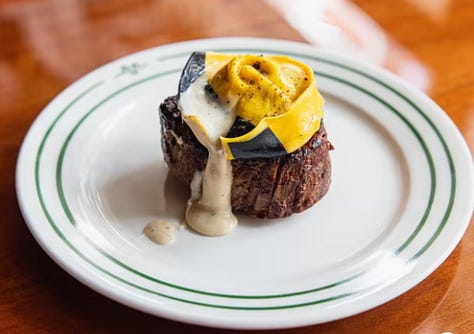



A revolution in NYC transportation (and especially through Central Park)…Citibike now offer e-bikes all around NYC! Instead of walking for 30-40 minutes to get to your favorite museum and getting sweaty in the process, or taking the dirty subway, you can hop on a Citi e-bike and breeze your way (with very little effort) through glorious Central Park and have SO MUCH FUN watching the sights of the park all around you. This is seriously a revelation in how I will think about getting to my favorite places in the city in the future. It is a must!
The Metropolitan Museum of Art is my favorite museum, and my husband and I enjoyed the Caspar David Friedrich exhibition and the Sargent in Paris. Both spectacular. John Singer Sargent is my favorite artist.
As I come down from the high of our whirlwind vacation, I thought for today’s newsletter I would do a review of the top 10 most popular SC History Newsletters of the past year, based on click through rates and “likes.” Thank you for your engagement on these. For those who are new, I hope you enjoy some of these articles from the archive! For “OG” newsletter subscribers, I hope you might enjoy revisiting these from the past.
And finally, after the “hustle and bustle” of our NYC trip, I am excited to have some Oliver Pluff tea tonight. Just a lil’ shoutout to our amazing sponsor!
Now, let’s revisit some history!
Yours truly,
Kate
(Writing from Greenville, SC)
Support the SC History Newsletter by considering heritages teas (inspired by South Carolina and American history!) from our fantastic sponsor Oliver Pluff & Co. — click on their beautiful ad below! :)
➳ Housekeeping for new subscribers!
New friends! There are over 100 previous SC History newsletters on topics ranging from the founding of Charleston, sunken Confederate submarines, railroad tunnels filled with blue cheese, and more! See our archive here!
Send me your comments or topic ideas: I love it when subscribers write to me! Have a SC History topic or question you’d like for me to write about? Have additional ideas or feedback? Just reply to this email and let me know!
Join us on social: Keep the conversation going and join over 100 other subscribers by becoming a member of our SC History Newsletter Facebook Community here!
If your email “cuts off”: In your email app or website, if my emails “cut off” for you, please click the title of the email and it will take you to the full post on the Substack. I don’t want you to miss any content!
Love the SC History Newsletter? Please click the button below to share with a friend!
➳ Featured SC History Event of the Week:
🗓️ Sunday, May 18th at 2:00 pm
📝 “12,000 Year History Park – Civil War Tour”
📍Cayce Tennis Center | Cayce, SC
🎟️This event is free
💻 Website
From the event website:
“The Battle of Congaree Creek was the last fortified position defended by Confederate troops before the capture and destruction of Columbia. As we walk the battlefield and visit the earthworks, learn about the strategies and tactics used by both sides as Sherman marched through South Carolina on his way to Columbia.
History Tours start at the Cayce Tennis Center, 1120 Fort Congaree Trail in Cayce, where free parking is available. Please meet the tour guides at the entrance to the park and park in the dirt parking lot located to the left and just beyond the Tennis Center. For any updates, please visit our website at cayce12000years.com and follow us on Facebook and Instagram for new information! If you have questions, please contact (803)-739-5385.”
➳ 🗓️ Paid subscribers get access to my SC History Events Calendar that organizes all the upcoming SC history events I have discovered. Please let me know if you’d like to add an event to the calendar! Reply to this email to send me your events.
➳ Top 10 SC History Newsletter Articles of The Past Year
Ranked in terms of popularity, with most popular at the top…
#109: Santa Elena + Early Spanish Settlement of SC, a New Voyage to Carolina, and a 12,000 Year History Park
This newsletter was a joy to write, and I was thankful to longtime subscriber Alan Piercy for kicking it off with a vivid, personal reflection of the historic Hurricane Hugo. His memories — and his recommendation of Lunatic Wind by William Price Fox — remind us how deeply weather events can shape our collective experience and communal memory.
From there, we traveled even further back in time to explore the first European settlers in South Carolina — not the British, but the Spanish! I uncovered the gripping story of Lucas Vázquez de Ayllón, his enslaved translator Francisco de Chicora, and the short-lived colony of San Miguel de Guadalupe, founded in 1526. It was the first European town in what is now the U.S., predating Jamestown by decades. Even more amazing? The site hasn’t been rediscovered yet!
We then jumped ahead to Santa Elena on St. Helena Island, a settlement established by the Spanish in 1566.
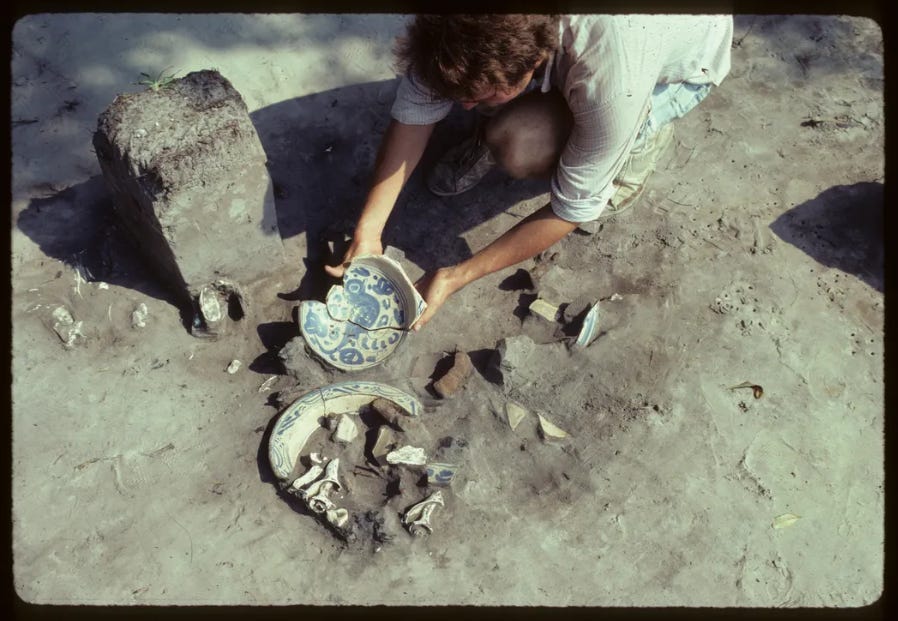
#107: Surviving Hurricane Hugo, a Textile Tour, and the Combahee River Raid
This newsletter took us into the eye of one of the most devastating events in South Carolina history — Hurricane Hugo. As I researched the hurricane’s catastrophic path and staggering impact, I couldn’t help but be moved by the stories of survival and resilience. From Charleston to McClellanville, families faced down rising floodwaters, collapsing roofs, and deafening winds — and lived to tell the tale. I included personal accounts, like Thomas Williams tying his children together with a telephone cord in pitch black floodwaters, and the miraculous survival of 600 people at Lincoln High School. These stories left me in awe.
In addition to Hugo, I shared a behind-the-scenes curator-led tour of historic Lowcountry fabrics at the Charleston Museum. And for those looking to dig into powerful, lesser-known Civil War history, I featured COMBEE, a riveting new book about Harriet Tubman’s legendary Combahee River Raid right here in South Carolina.

#126: The First Poinsettias in SC, Santa's Blacksmith Workshop, and Colonial Tea
In this merry edition of the SC History Newsletter from December, I dove into the festive roots of one of Christmas’s most iconic plants — the poinsettia — and its surprising South Carolina connection! Joel Poinsett, Charleston-born and an endlessly fascinating SC historical figure, introduced this stunning red plant to the U.S. after encountering it in Mexico in the 1820s. A diplomat, botanist, and all-around Renaissance man, Poinsett brought cuttings home, shared them with friends, and— voilà! — a Christmas classic was born. From sacred Aztec symbolism to White House fashion statements, the poinsettia’s history is intriguing and iconic.
I also spotlighted a magical holiday blacksmith workshop at Hagood Mill, perfect for anyone wanting to forge some Christmas cheer. I debuted a new FOOD section in the newsletter’s recommendations corner — starting with Oliver Pluff & Co., a Charleston gem reviving historic teas and coffees — now the sponsor of the SC History Newsletter! We are grateful to them!
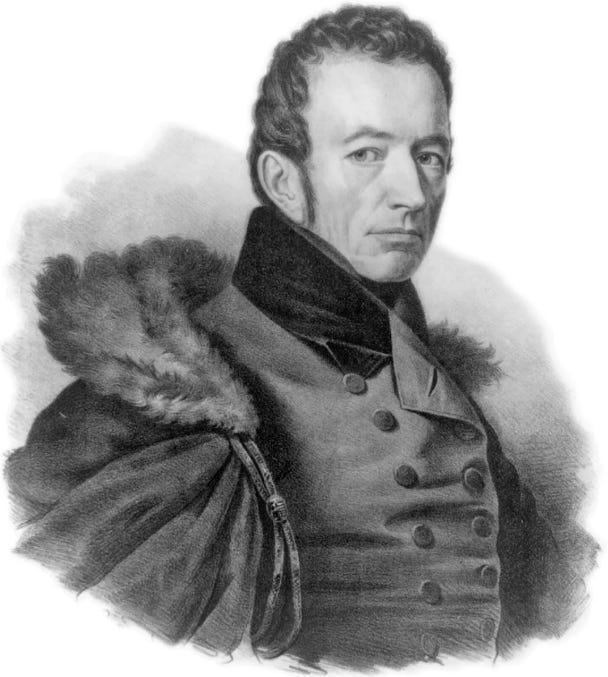
#137: Historic Beaufort, Dancing With Lafayette, and The Prince of Tides
This newsletter whisked us away to beautiful Beaufort, SC — one of the oldest and most fascinating towns in the state! I shared highlights from four major historic sites: the hauntingly beautiful ruins of the Old Sheldon Church (burned twice—once by the British, then again by Sherman), the elegant John Mark Verdier House where General Lafayette danced during his farewell tour, the inspiring Robert Smalls House (Smalls escaped slavery and returned to buy the house he was once enslaved in), and the Penn Center on St. Helena Island, a groundbreaking school for freed slaves and later a sanctuary for Dr. Martin Luther King, Jr.
In addition to our Beaufort deep dive, I featured an exciting event at the Beaufort History Museum celebrating Lafayette’s 200th anniversary tour (complete with dancing!), and a South Carolina literary classic, The Prince of Tides by Pat Conroy.
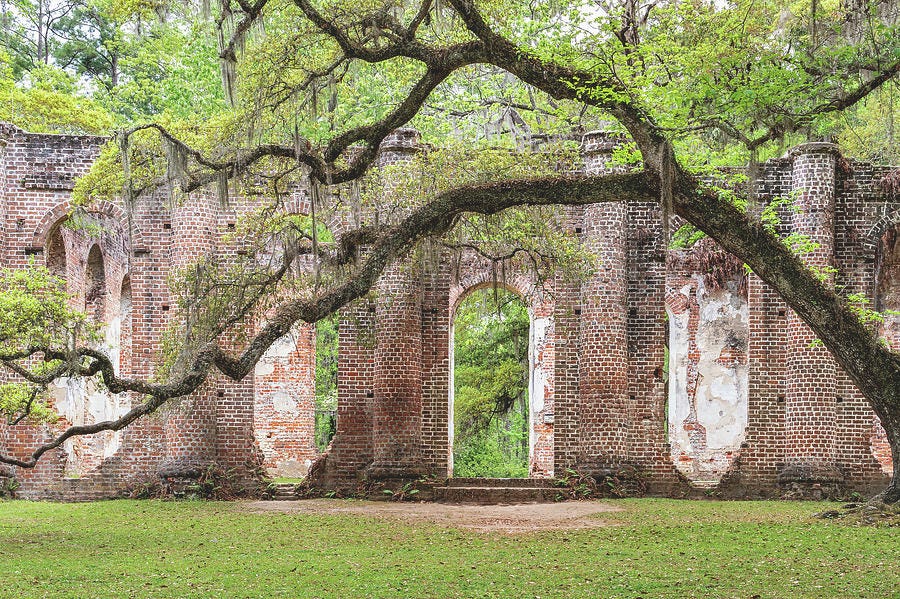
#122: General Nathanael Greene, Revolutionary War "Lunch & Learn," and The Demon of Unrest
This newsletter was a full-on Revolutionary War adventure, starring none other than General Nathanael Greene — the unsung hero who helped turn the tide for America in the South! (And yes, Greenville, SC, where I live, is proudly named after him—with the extra “e” and all!)
As a member of the Nathanael Greene chapter of the Daughters of the American Revolution, I figured it was high time I got to know our namesake. From starting his life as a pacifist Quaker child with a limp to becoming General Washington’s most trusted general and the mastermind behind victories like Cowpens and Guilford Courthouse, Greene had an extraordinary life. He outwitted Cornwallis with bold, risky strategies that saved the South. Truly one of the most underrated legends of the Revolution.

#133: SC250: History of Rev. War General Andrew Pickens, American Revolution Traveling Exhibit, and "Who Comes to King's Mountain?"
In this newsletter, we explored the life of General Andrew Pickens — known as “The Wizard Owl” (best nickname ever?) to Native American allies and “The Hero of Cowpens” to grateful patriots. Born in Pennsylvania in 1739, Pickens moved with his Scots-Irish family to South Carolina via the Great Wagon Road. A veteran of the Cherokee War, he rose to Revolutionary War prominence for his victories in the backcountry, particularly the Battle of Cowpens. After the war, he became a statesman, Presbyterian elder, and treaty negotiator with several tribes on his Hopewell Plantation — where the historic Hopewell Treaties were signed under a mighty oak.
I also featured the The American Revolution Experience traveling exhibit in Rock Hill (Feb 20–Mar 7), hosted by the DAR Kings Mountain Chapter and the American Battlefield Trust. Plus, I recommended Who Comes to King’s Mountain?, a youth-friendly historical novel perfect for readers exploring divided loyalties in 1780s Carolina.
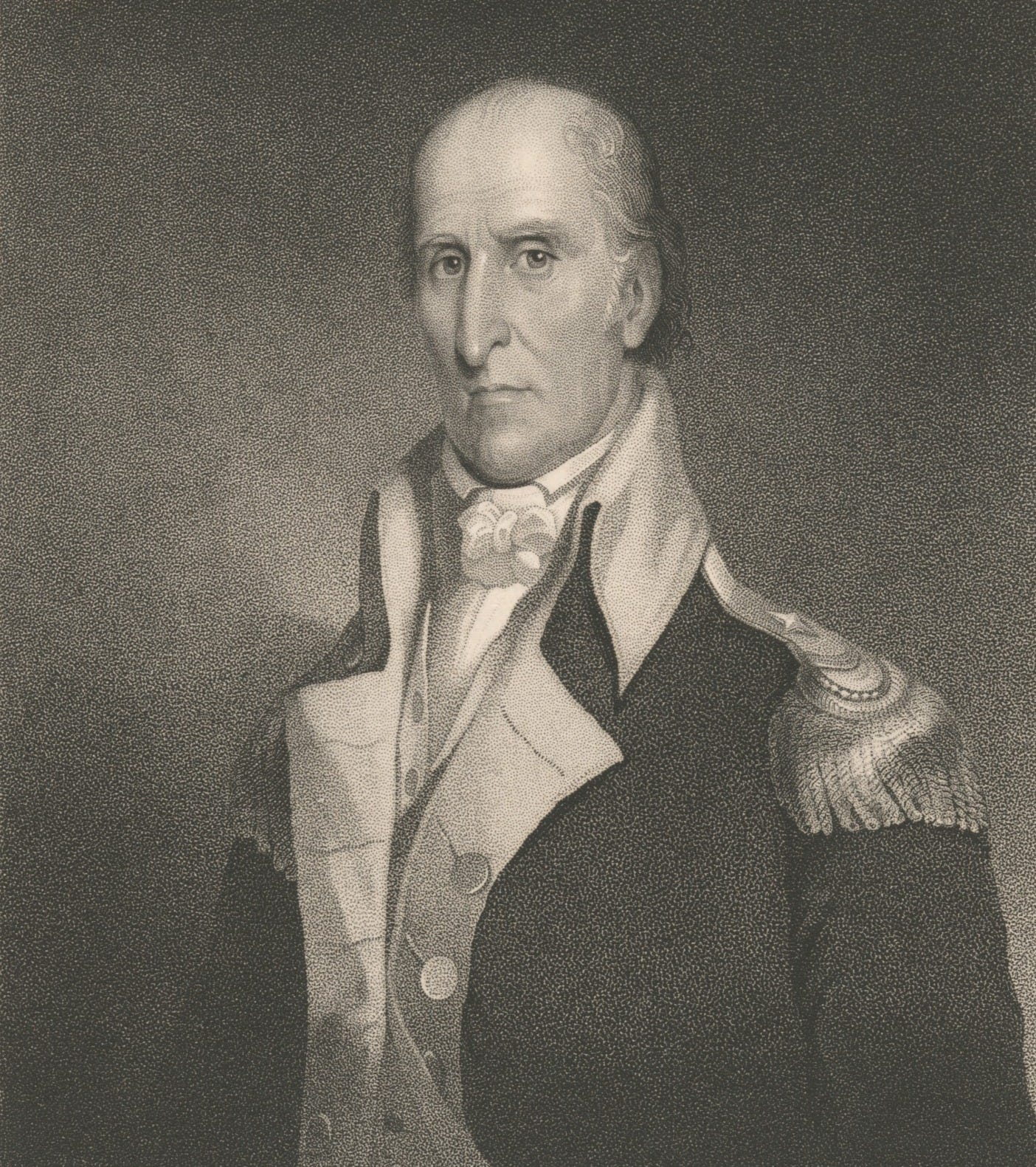
#130: The History of Charleston Harbor, The "Real" Rhett Butler, and Carolina Gold Rice
In this newsletter, we explored the history and legacy of Charleston Harbor — from its 17th-century founding as the economic heart of the colony, through pirate attacks and Revolutionary battles, to its critical role in the Civil War and global commerce today. The harbor witnessed the first shots of the Civil War at Fort Sumter and was a hub for the Transatlantic slave trade at Gadsden’s Wharf. During the war, George Trenholm, a Charleston-based financier and blockade runner (and likely inspiration for Gone With The Wind’s character Rhett Butler), made millions exporting cotton and importing supplies.
We also discussed the Confederate Hunley submarine (launched and perished as the first-ever battle submarine, in the harbor during the Civil War), to the harbor’s modern-day status as the deepest harbor on the East Coast and a global export hub for BMWs, aircraft, and rubber.
Even beneath the surface, Charleston Harbor teems with life: dolphins, turtles, and sea birds abound. From pirates to ports to porpoises, Charleston Harbor remains a vibrant symbol of South Carolina’s past and future.

#129: History of The Yamassee War, Charleston History Bowl 2025, and The Carolina Backcountry
In this newsletter, we dove into a shocking chapter of early South Carolina history that more people should know about: the Yamassee War of 1715–1718. In truth, this war nearly wiped the South Carolina colony off the map. If things had gone differently, the colony may not have survived at all!
The Yamassee Indians were early trade allies of the colonists, exchanging deerskins for goods. But after overhunting and shady debt practices by colonial traders, tensions exploded. On Good Friday, 1715, the Yamassee launched a coordinated attack, killing traders (including Indian agent Thomas Nairne) and launching widespread raids across the Lowcountry. It was a full-scale rebellion, with support from other tribes like the Creek and Choctaw.
Governor Charles Craven scrambled Charleston’s defenses — arming every man, and even enlisting enslaved Africans. Over the next year, with support from the Cherokees and key battles at Port Royal and Salkehatchie, the colony narrowly pushed back the attacks. But the toll was staggering: 400 settlers dead, plantations burned, and more than half the cultivated land abandoned.
I was fascinated by how close South Carolina came to total collapse — and how this war reshaped everything from Indian trade to slavery. A true turning point in our state’s story.

#105: Coca-Cola in SC, Camden Parlor Talk, and Southern Ladies' Civil War and Antebellum Fashions
This week’s newsletter was fizzy, fashionable, and full of surprises! After a trip to Atlanta’s World of Coca-Cola with my family (including a very enthusiastic 12-year-old stepson), I couldn’t help but start thinking about Coca-Cola’s roots here in South Carolina. Did you know Greenville had one of the earliest Coca-Cola bottling plants in the South? Or that a beloved local employee named Peter Moseley delivered Coke to local residents by horse-drawn wagon in the early 1900s? I loved learning how Greenville’s Coke bottling plant became a social hub, complete with free tastings, receptions, and community events right here in our own backyard.
We also looked at Southern fashion in the antebellum and Civil War era. Yes, I admit it, my curiosity started with Scarlett O’Hara’s iconic green curtain dress in Gone With The Wind. Sarah E. Mitchell’s book Southern Ladies’ Civil War and Antebellum Fashions gave a fascinating look at the shoes, bonnets, and undergarments Southern women wore and how they adapted during wartime shortages.
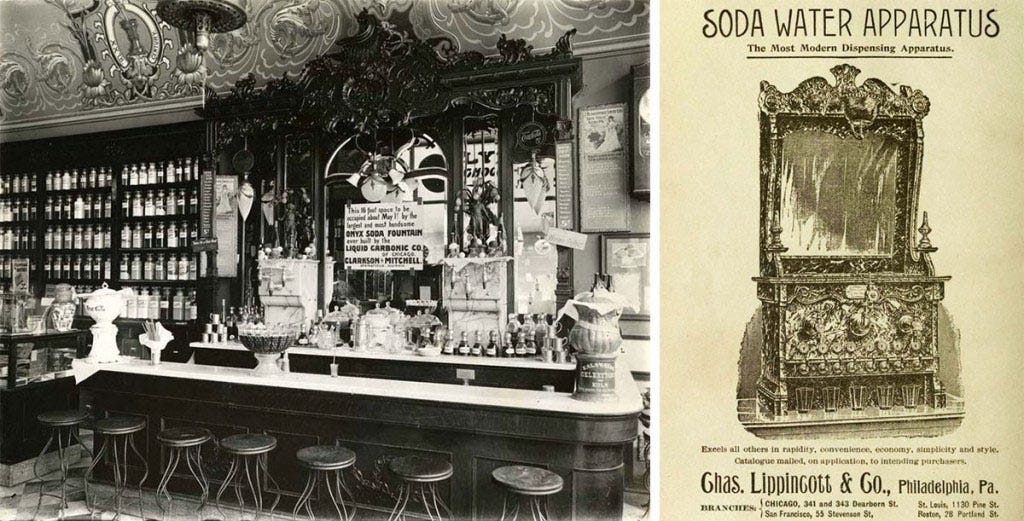
#114: History of the SC State House, The River is Wide, and Searching for Poe
In this week’s newsletter, I enjoyed diving into the fascinating history of the South Carolina State House. Did you know the beautiful building we see today wasn’t the original? The very first state house was built in Charleston in the 1700s, and the second one in Columbia burned down during Sherman’s infamous march in 1865. Our current State House took over 50 years to finish (with plenty of drama along the way), and was built with granite hauled from the Congaree River by enslaved workers and Irish immigrants. I even included photos from my recent visit — including the brass stars that mark where cannonballs hit the building during the Civil War!
I also shared some of the most interesting and controversial monuments on the State House grounds, from the African-American History Monument to the towering statue of George Washington (complete with a plaque explaining his mysteriously broken cane).


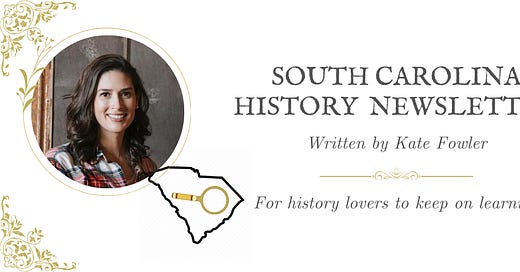















The history in SC is endlessly fascinating. Thanks for posting.